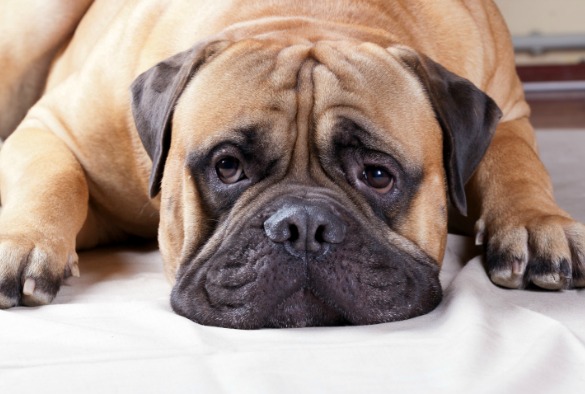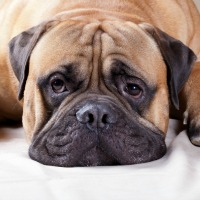JanUary: Obesity is not just a human problem
Published on

Dr Alex German is a Reader in Small Animal Medicine at the University. As well as teaching, and undertaking specialist clinical work, he runs the Royal Canin Weight Management Clinic (www.pet-slimmers.com). The clinic aims to improve the quality of life of overweight pets through clinical excellence, research and education. As well as slimming down many overweight cats and dogs, we have published over 30 scientific studies about obesity and weight management in pets:
"Although this week's JanUary campaign is about doing something good for you we must not forget our furry friends.
The festive season can take its toll on us with all of the over indulgence and this is the same for our pets. We all spend more time at home during this period, and often have many visitors, all desperate to join in the fun. Frequently, this means giving your pets more treats than usual, not least foods they would not normally have - with lots of fat, sugar and of course energy! Weather can be bad at this time of year, meaning pets have fewer opportunities to exercise and burn off those extra calories. It is the combination of more energy in, but less being used that can result in unwanted weight gain. Increases in weight tend to happen slowly and steadily meaning that you don’t see it happening; before you know it, you have a podgy pooch or a fat cat on your hands!
Excess weight can take as much of a toll on an animal’s body as it does on a human’s body, with examples including:
- Shorter lifespan
- Poorer quality of life
- Decreased activity and vigour
- Lameness, for various reasons including arthritis
- Increased risk of insulin resistance and diabetes
- Increased cancer risk
- Breathing difficulties
- Increased chance of developing certain liver diseases (e.g. lipidosis in cats)
While some of the effects of obesity can be reversed through diet changes and more physical activity some damage will remain for life.
So, how can I tell if my pet is overweight?
The most reliable method of determining the condition of your pet is body condition scoring. This combines a visual and hands-on assessments to determine body shape and body fat mass. Typically, body condition is scored from 1 to 9, with score of 4-5 being optimal, and scores of 6 and above being overweight. The assessment only takes a few seconds to perform, but is best undertaken by a veterinary professional. Studies have shown that owners tend to under-estimate the condition of their own pet, meaning that they are fooled into thinking they are thinner than they truly are! However, as an owner, you can still get a rough idea of your pet’s shape by performing two simple things…
1. First, brushed your fingers over the ribs of your dog or cat (whilst they are standing). You should be able to feel the ribs when only applying light pressure. As a guide, it should be similar to feeling over the back of the fingers of your hand. If the ribs are very obvious (i.e. like feeling your knuckles), your pet may be overweight; if, however, it is more difficult to feel the ribs (i.e. like feeling the bones on the back of your hand or worse), your pet is likely to be overweight.
2. Next take time to view the shape of your pet’s tummy. From directly above, you should see a clear waist i.e. ‘hour-glass’ figure; from the side, there should be an obvious abdominal ‘tuck’ behind the ribs (i.e. the tummy area should tuck up nicely). If your pet has long hair you will, instead need to trace the outline with your hands. If you cannot see either a clear waist or tuck, your pet may well be overweight.
Of course, always speak to your vet about your findings and, if necessary, they can confirm your assessment by performing a proper body condition score. They can also then advise on whether steps may be needed to return your pet to their perfect shape.
How much should I be feeding my pet?
Amount
Sounds like an easy question in theory, but can be more challenging in practice. In short, it depends about the characteristics of your pet (species, breed, sex, age, if they are neutered), their activity levels, whether they have any medical issues, and what you choose to feed. Most pet foods do you give you a guide for what is typical, based upon your pet’s body weight. However, please be aware this only represents an average, and exact needs can vary by up to 50% either way.
The best approach is to ensure you weigh your food out precisely (so you know what you are actually giving - see below), and feed this amount whilst monitoring their body weight (best done by visiting your vet every 2 weeks for a weight check). If they are gaining weight, you need to feed less; if they are losing weight you need to feed more. Thus, over time you will be able to determine your pet’s unique needs. Of course, bear in mind that, if their activity changes (i.e. if exercised less), you may need to reduce the food you give).
Portion control
Be as precise as you can when measuring portions. Our studies have shown that measuring cups are unreliable for measuring dog and cat food, being immensely variable and usually leading to overfeeding. The only way to be sure what they are getting is to weigh food out on electronic kitchen scales.
Treats and extras
It is common for pet owners to demonstrate the love they have for their pet by giving treats, and these can include dog or cat treats, and human food including table scraps. It is advisable to avoid this if at all possible, or restrict to an absolute minimum. The trouble is that they are usually unhealthy snack (high sugar, high fat, high salt) and it is difficult to keep track of them, meaning extra calories soon mount up. Our experience is that overfeeding of treats and extras is a major culprit for causing unwanted weight gain in pets. To avoid running in to problems, count the calories in the treats you give, limit intake of treats to no more than <5% of the daily calorie needs (otherwise the diet will become unbalanced), and reduce the amount of main meal fed accordingly.
How much exercise does my pet need?
Again, a difficult question to answer since they can be highly variable amongst different pets. The best rule is to make sure they have regular activity on a daily basis, to a level that they can cope with and can be managed within your busy lifestyle. Dogs should ideally be walked every day, for at least 30 minutes at a time, though longer is invariably better for burning calories. Regular play sessions (using various toys) are also good and provide much-needed mental stimulation. However, always tailor the type of exercise to the individual. Controlled exercise (e.g. lead walking) is preferable if your dog has orthopaedic problems (e.g. arthritis etc.).
If walks are not possible for medical reasons, consider other forms of exercise e.g. swimming, hydrotherapy etc. It is best to seek advice from your veterinary surgeon so as to ensure that the exercise plan is appropriate for your pet’s needs and capabilities.
How can I exercise my cat?
If your cat has outdoor access, they may exercise themselves when out. However, what they do is highly variable/ Also, for inactive or indoor cats the best approach is to encourage regular play sessions to stimulate exercise and movement. Both kittens AND adult cats have a behavioural need to undertake regular play, which mimics the type of activity that they would undertake during hunting in the wild.
It is preferable to keep play sessions short (e.g. 2 minutes per session), but try to do this frequently (2-3 times per day if possible, but whatever you can manage). Use a variety of toys to stimulate their interest, but you may need to change these periodically so the cat does not become bored. Again, tailor the type and amount of activity to the individual cat and seek veterinary advice first if you cat has a medical issue.
Finally, it can help to make use of the 3-dimesional space in your home, since cats love to jump and climb. Various climbing frames and ‘activity centres’ are now available that it may be worth investing in.
How do I know if I’m feeding and exercising the right amount?
Always be aware of exactly what you are feeding (including treats and extras!) and how much exercise your pet is getting, and be aware that any changes in either can influence their needs. It can help to keep a regular diary record so you can keep track. In addition to this, it is strongly advisable to weight your cat regularly, throughout their life, so as to keep track of things. This should start early on (i.e. when you first acquire your pet), and continue both during growth and subsequent adult life. Once you know your pet’s ‘early adult weight’ (i.e. the weight they are when they first become an adult, typically 12-24 months’ age), and provided that they are in ideal body condition score at this time, that weight is what they should maintain for life. Weighing your pet regularly when an adult (at least every 6 months) will enable you to confirm their weight is stable, and help you spotted the early signs of weight gain - Before it becomes an issue. Small adjustments to what you are feeding (e.g. cutting down on treats, reducing the main meal a little) can be implemented to correct the problem.
If you have any concerns about your pet’s weight, don’t hesitate to contact your veterinary surgeon or nurse for further advice.
Should you wish your animal to be referred to the weight clinic then please contact your Veterinary Surgery so they can arrange that for you. The clinic will take in fat cats and dogs referred to it by veterinary practices across Merseyside and beyond."
